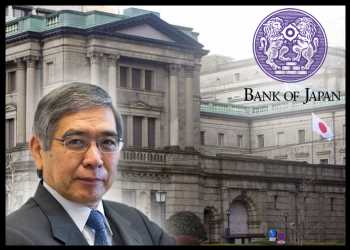Bank of Japan left its ultra-loose monetary policy stance unchanged on Friday in the final meeting led by Governor Haruhiko Kuroda, thus passing the baton to Kazuo Ueda who was just confirmed by the Japanese parliament Diet as his successor.
The decision was in line with economists’ view as policymakers were widely expected to maintain status quo in the last meeting of Kuroda’s decade-long term that ends on April 8.
The BoJ board unanimously decided to kept its yield curve control policy unchanged this time. Under this stance, the bank aims to keep the yields on 10-year Japanese government bonds between plus or minus 0.5 percentage points. This range was expanded in December from plus or minus 0.25 percentage points.
The Policy Board also unanimously decided to maintain a negative interest rate of -0.1 percent on current accounts that financial institutions maintain at the central bank.
The central bank kept its commitment to purchase a necessary amount of JGBs without setting an upper limit.
BoJ policymakers also considered the end of the financial year this month and chose not to rattle the bond and currency markets by making any surprise changes to the policy stance.
Capital Economics expects the incoming Governor Ueda to abandon the Yield Curve Control in his first policy session late-April.
The central bank was slightly more downbeat this time as it downgraded its assessment of industrial production and exports, Marcel Thieliant, an economist at the research firm, said.
“There’s nothing in that statement that would suggest an imminent end to YCC, but that’s not surprising,” Thieliant said.
“Any hints that YCC is about to end would unleash a wave of speculative attacks on the Bank’s yield target.”
Bond market functioning has not improved as the BoJ expected when it widened the 10-year JGB yield tolerance band in December. Since then, the central bank had to buy record amount of bonds in January and the bank’s bond holdings are now at record highs, the economist pointed out.
The BoJ hopes the domestic economy to recover with the impact of COVID-19 and supply-side constraints waning. However, the bank expects the economy to remain under downward pressure stemming from high commodity prices and slowdowns in overseas economies.
Japan’s economy is projected to continue growing at a pace above its potential growth rate, the bank said.
The CPI inflation minus fresh food is projected to ease toward the middle of this fiscal year due to the effects of the government steps to lower energy prices.
A waning of the effects of a pass-through to consumer prices of cost increases led by a rise in import prices is also expected to contribute to the expected slowing in inflation.
Policymakers assessed extremely high uncertainties for Japan’s economic outlook, the bank said.
Source: Read Full Article
-
RBA Signals More Rate Hikes On Inflation Concerns
-
New Zealand Consumer Confidence Remains Extremely Low: ANZ-Roy Morgan Poll
-
Novartis Lifts FY23 View As Q2 Results Top Market, Initiates $15 Bln Buyback; Stock Up
-
Lost your job? How to make your redundancy payout work for you
-
How Daylight Saving Time upends the economy

